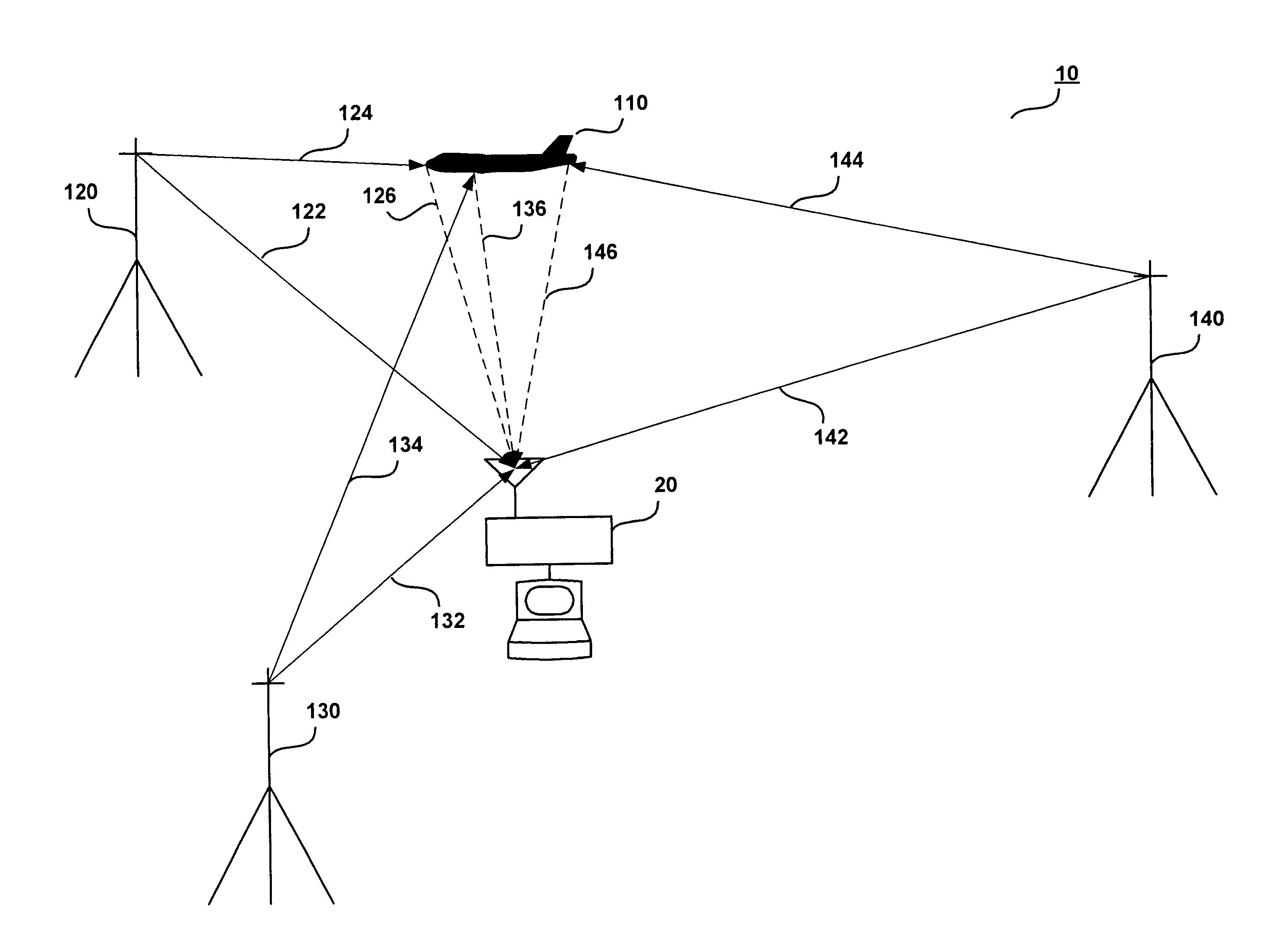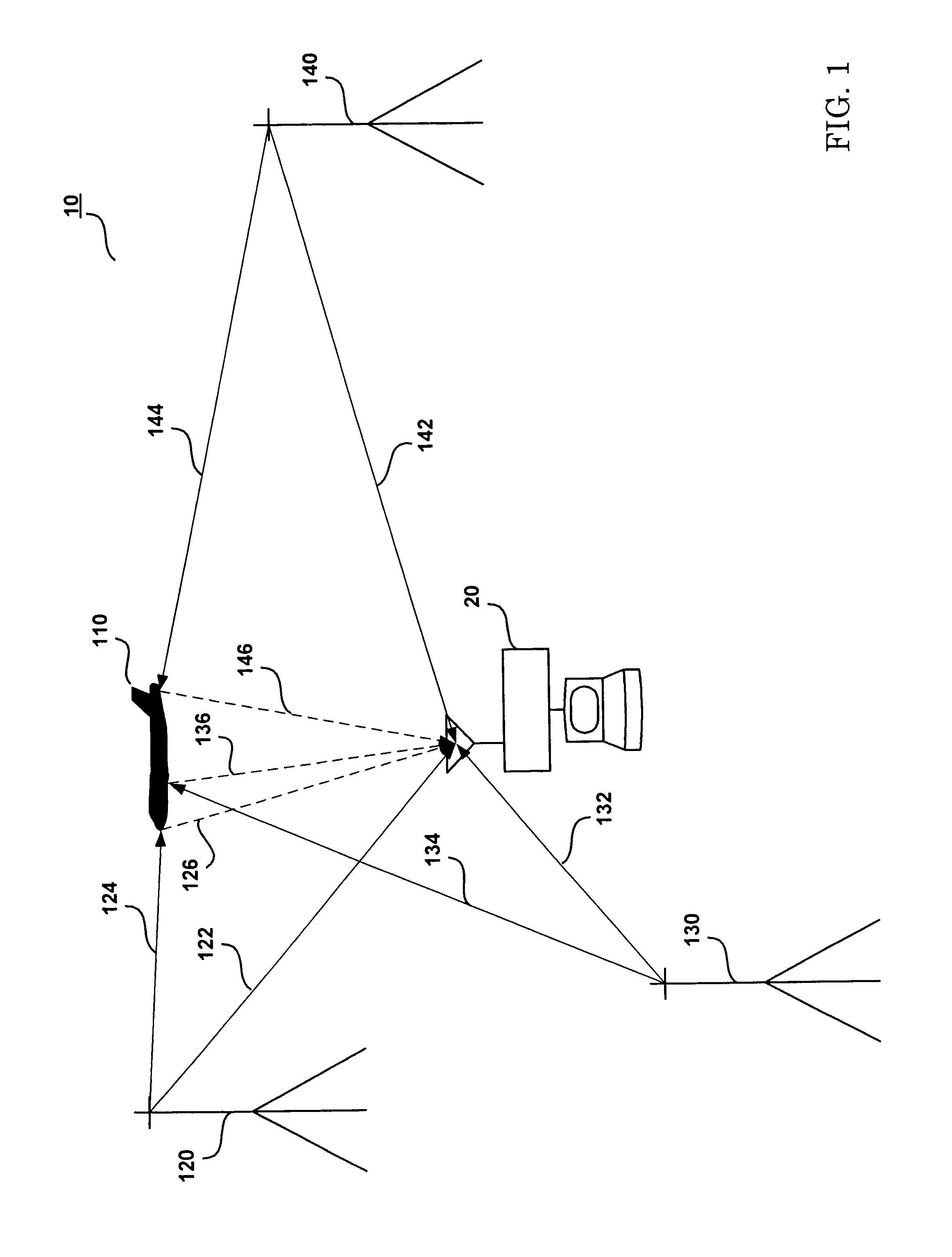System and method for target signature calculation and recognition
a target object and signature technology, applied in the direction of measurement devices, radio wave direction/deviation determination systems, instruments, etc., can solve the problems of increasing the cost of construction and operation of radar systems, increasing the cost of target object identification determination, and increasing the cost of tracking systems. , to achieve the effect of improving the detection ability of targets, high signal energy, and low cost of a pcl system
- Summary
- Abstract
- Description
- Claims
- Application Information
AI Technical Summary
Benefits of technology
Problems solved by technology
Method used
Image
Examples
Embodiment Construction
[0039]Reference will now be made in detail to various embodiments of the present invention, examples of which are illustrated in the accompanying drawings.
[0040]FIG. 1 illustrates a conventional PCL target-tracking configuration 10. This configuration 10 includes a PCL signal processing unit 20, a target object 110, and a plurality of transmitters 120, 130, and 140. Accordingly, the PCL signal processing unit 20 receives direct RF signals 122, 132, and 142 broadcast by transmitters 120, 130, and 140, as well as reflected RF signals 126, 136, and 146. The reflected RF signals 126, 136, and 146 are also broadcast by transmitters 120, 130, and 140 and are reflected by the target object 110.
[0041]In a typical target-tracking configuration, the PCL processing unit 20 calculates the time-difference-of-arrival (TDOA), frequency-difference-of-arrival (FDOA) (also known as the Doppler shift), and / or other information from the direct RF signals 122, 132, and 142 and the reflected RF signals 1...
PUM
 Login to View More
Login to View More Abstract
Description
Claims
Application Information
 Login to View More
Login to View More - R&D
- Intellectual Property
- Life Sciences
- Materials
- Tech Scout
- Unparalleled Data Quality
- Higher Quality Content
- 60% Fewer Hallucinations
Browse by: Latest US Patents, China's latest patents, Technical Efficacy Thesaurus, Application Domain, Technology Topic, Popular Technical Reports.
© 2025 PatSnap. All rights reserved.Legal|Privacy policy|Modern Slavery Act Transparency Statement|Sitemap|About US| Contact US: help@patsnap.com



